
Thomas Tannatt Pryce VC MC & Bar was a British recipient of the Victoria Cross, the highest and most prestigious award for gallantry in the face of the enemy that can be awarded to British and Commonwealth forces. An officer with the Grenadier Guards during the First World War, he was posthumously awarded the VC for his actions over the period 11 to 13 April 1918, during the German spring offensive.
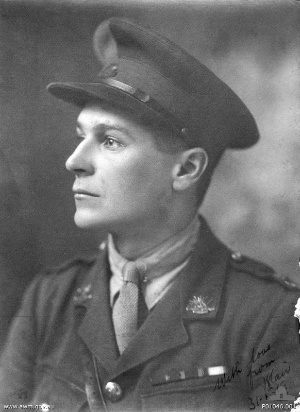
Blair Anderson Wark, was an Australian recipient of the Victoria Cross, the highest decoration for gallantry "in the face of the enemy" that can be awarded to members of the British and other Commonwealth armed forces. A quantity surveyor and member of the Citizens Military Force, Wark enlisted in the Australian Imperial Force on 5 August 1915, for service in the First World War. After initially being employed in the defence of the Suez Canal, his battalion was shipped to the Western Front; it was here that Wark was twice decorated for his bravery and leadership. Having received the Distinguished Service Order in 1917 for his actions at the Battle of Polygon Wood, Wark was awarded the Victoria Cross in 1918 for his leadership and gallantry when in temporary command of his battalion over a three-day period, while conducting operations against the Hindenburg Line.

Lawrence Carthage Weathers, was a New Zealand-born Australian recipient of the Victoria Cross, the highest award for gallantry in battle that could be awarded to a member of the Australian armed forces at the time. His parents returned to their native South Australia when Weathers was seven, and he completed his schooling before obtaining work as an undertaker in Adelaide. He enlisted as a private in the Australian Imperial Force (AIF) in early 1916, and joined the 43rd Battalion. His unit deployed to the Western Front in France and Belgium in late December. After a bout of illness, Weathers returned to his battalion in time to take part in the Battle of Messines in June 1917, during which he was wounded. Evacuated to the United Kingdom, he rejoined his unit in early December.

James Park Woods was an Australian recipient of the Victoria Cross during World War I; the Victoria Cross was the highest award for gallantry in the face of the enemy that could be awarded to members of the Australian armed forces at the time. Woods enlisted in the Australian Imperial Force in September 1916 and, after training in Australia and the United Kingdom, joined his unit, the 48th Battalion, in France in September 1917. Along with the rest of his battalion, he participated in the First Battle of Passchendaele the following month. In early 1918, Woods was hospitalised for several months before rejoining his unit in May. He again reported sick in July, and did not return to the 48th Battalion until mid-August.
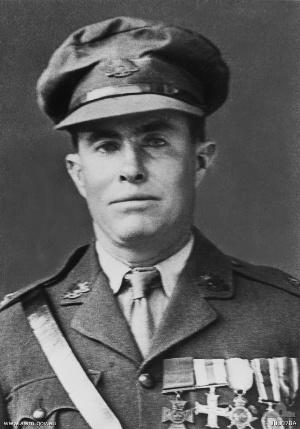
Edgar Thomas Towner, VC, MC was an Australian recipient of the Victoria Cross, the highest decoration for gallantry "in the face of the enemy" that can be awarded to members of the British and Commonwealth armed forces. A lieutenant in the Australian Imperial Force during the First World War, Towner was awarded the Victoria Cross for his actions on 1 September 1918, during an attack on Mont St. Quentin on the Western Front.
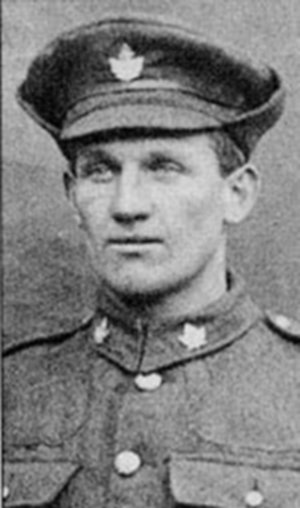
Ellis Wellwood Sifton was a Canadian soldier. Sifton was a recipient of the Victoria Cross, the highest and most prestigious award for gallantry in the face of the enemy that can be awarded to British and Commonwealth forces.

Percy Clyde Statton, was an Australian farmer, soldier, and a recipient of the Victoria Cross, the highest decoration for gallantry "in the face of the enemy" that can be awarded to members of the British and Commonwealth armed forces. Serving as a sergeant during the First World War, Statton was awarded the Victoria Cross in 1918 following his assault on four German machine guns. With three men, Statton rushed the posts armed with only a revolver and succeeded in capturing the first gun. Moving to the second, he killed the crew of five himself before the two remaining gun crews were forced to retreat.

Percy Valentine Storkey, VC was a New Zealand-born Australian recipient of the Victoria Cross (VC), the highest award for gallantry in the face of the enemy that can be awarded to British and Commonwealth forces.

Donald Forrester Brown, VC was a New Zealand recipient of the Victoria Cross (VC), the highest award for valour "in the face of the enemy" that can be awarded to British and Commonwealth forces.

George Morby Ingram, VC, MM was an Australian recipient of the Victoria Cross, the highest decoration for gallantry "in the face of the enemy" that can be awarded to members of the British and Commonwealth armed forces. Ingram became Australia's final recipient of the Victoria Cross during the First World War following his actions during an attack on the village of Montbrehain in France. Leading a platoon during the engagement, he instigated several charges against a number of German strong points that eventuated in the seizure of ten machine guns and sixty-two prisoners, as well as inflicting high casualties.

Phillip Davey, was an Australian recipient of the Victoria Cross (VC), the highest award for gallantry in battle that could be awarded to a member of the Australian armed forces at the time. Davey enlisted in the Australian Imperial Force in December 1914 for service in World War I, and joined his unit, the 10th Battalion, on the island of Lemnos on 10 April 1915. Along with his battalion, he landed at Anzac Cove, Gallipoli, on 25 April. He fought at Anzac until he was evacuated sick in early November, returning to Australia the following January.

Frederick Hobson VC was a soldier in the Canadian Expeditionary Force, and recipient of the Victoria Cross, the highest military award for gallantry in the face of the enemy given to British and Commonwealth forces, during the First World War.
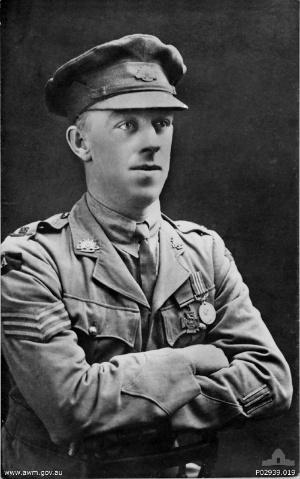
George Julian "Snowy" Howell, VC, MM was an Australian recipient of the Victoria Cross, the highest decoration for gallantry "in the face of the enemy" that can be awarded to members of the British and Commonwealth armed forces. Howell was decorated with the Victoria Cross following his actions during the Second Battle of Bullecourt, in which he ran along the parapet of a trench bombing the German forces attacking his position through the use of grenades, and thus driving them back.
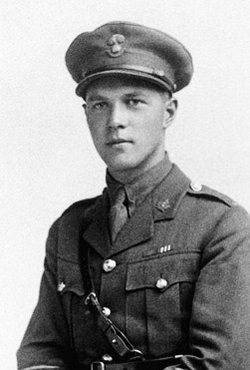
Samuel Lewis Honey, was a soldier in the Canadian Expeditionary Force, and posthumous recipient of the Victoria Cross, the highest military award for gallantry in the face of the enemy given to British and Commonwealth forces, during the First World War. He had already been awarded the Military Medal and Distinguished Conduct Medal for actions earlier in the war.

Joseph Maxwell, was an Australian soldier, writer, and a recipient of the Victoria Cross, the highest decoration for gallantry "in the face of the enemy" that can be awarded to members of British and Commonwealth armed forces. Often described as Australia's second most decorated soldier of the First World War, he enlisted in the Australian Imperial Force on 8 February 1915, and served at Gallipoli before being transferred to the Western Front. In just over twelve months he was commissioned and decorated four times for his bravery.

James Ernest Newland, VC was an Australian soldier, policeman and a recipient of the Victoria Cross, the highest decoration for gallantry "in the face of the enemy" that can be awarded to members of the British and Commonwealth armed forces. Newland was awarded the Victoria Cross following three separate actions in April 1917, during attacks against German forces retreating to the Hindenburg Line. While in command of a company, Newland successfully led his men in several assaults on German positions and repulsed subsequent counter-attacks.
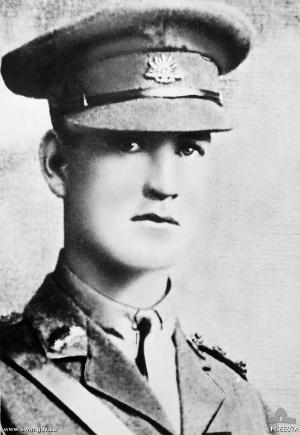
Percy Herbert Cherry, VC, MC was an Australian recipient of the Victoria Cross, the highest decoration for gallantry "in the face of the enemy" that can be awarded to members of the British and Commonwealth armed forces. The award was granted posthumously for Cherry's actions during an attack on the French village of Lagnicourt which was strongly defended by German forces.

John Bernard Croak VC was a soldier in the Canadian Expeditionary Force during the First World War and posthumous recipient of the Victoria Cross, the highest and most prestigious award for gallantry "in the face of the enemy" that can be awarded to British and Commonwealth forces. He earned the award for events that occurred during the Battle of Amiens in August 1918. A park and elementary school was named in his memory at Glace Bay, Nova Scotia.
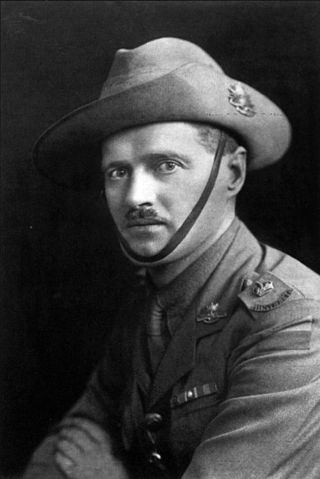
Henry William Murray, was an Australian grazier, soldier, and a recipient of the Victoria Cross, the highest decoration for gallantry "in the face of the enemy" that can be awarded to members of the British and Commonwealth armed forces. Decorated several times throughout his service in the First World War, Murray rose from the rank of private to lieutenant colonel in three and a half years. He is often described as the most highly decorated infantry soldier of the British Empire during the First World War.

Thomas James Bede Kenny, VC was an Australian recipient of the Victoria Cross, the highest award for gallantry in the face of the enemy that can be awarded to British and Commonwealth forces.





















